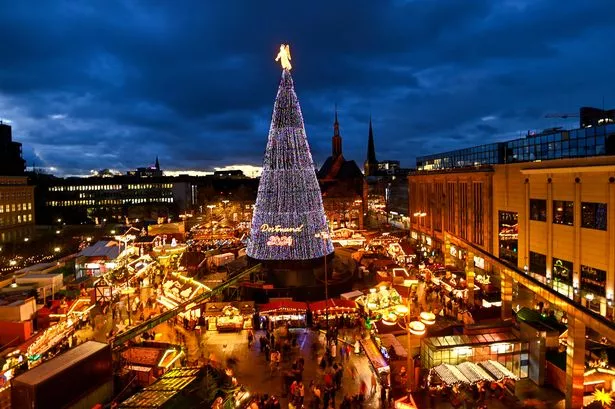One Reddit user said they had visited markets in Germany, Austria, the Czech Republic, Finland, and Estonia last winter, and the experience soon began to lose its sheen.
Visiting a Christmas market is a delightful festive tradition for many. The ambience and festivity make them a great way to get into the seasonal spirit, and there’s a chance of finding some unique Christmas gifts you wouldn’t spot elsewhere.
But there can be too much of a good thing, as one Reddit user discovered when they visited eight different markets across Europe last winter. Posting on the social media site, the user said they had visited markets in Germany, Austria, the Czech Republic, Finland, and Estonia, and the experience soon began to lose its sheen.
They wrote: “When I visited more than two or three markets in a short time (weekend) they all started to blur together really quickly. Each market had its own things, like different themes, food, and decorations, but after a few markets, it became hard to remember what things were in which city.
“All the markets started to feel repetitive, like a general ‘winter/Christmas market’ packed with people rather than something new and interesting in each location.”
They added they were disappointed to see local, handmade products were often drowned out by mass-produced goods. Concluding, they said they would still be visiting some Christmas markets this year, but would spread out their visits, and wouldn’t go to as many.
“I don’t regret my travel decisions – mainly because the markets were not the main point of my travels,” they said. “But if they were, I would be, just because it turns into one big blur so easily.
“So I will definitely recommend checking out some Christmas market or two if they’re your thing, just spend a little bit more time there to actually translate and understand all the cool local products they have.”
Commenters were mixed in their reactions, with some agreeing, but others saying they loved visiting Christmas markets in the lead-up to the big day.
One wrote: “I think going to one Christmas market – either here at home or somewhere else – per year can be charming, but to be honest, the whole thing has become so industrialised that I’m pretty done even after one. But I see it as more of an experience and usually don’t want to buy much.
“Like part of the charm is being outside, getting rosy cheeks, dipping in somewhere for a cappuccino or hot chocolate, or having eiswein, being with friends and not having structure or plans. Goes honestly for outdoor markets not at Christmas time, also, but there is something unique and charming at Christmas. It is sad about the squeezing out of real artisans.”
Another said: “Visiting too many Christmas markets quickly can really drain the experience and make them blur together tbh. It is actually smart to focus on one or two. I’d also support local artisans over mass produced souvenirs to keep the culture and quality alive.”
But a third said: “I’ve been to lots of Christmas markets with nice local food, crafts and arts that you can’t easily find elsewhere. And even if it is stuff you can find elsewhere, often the ambience is often quite nice. Talking about the real deal, German markets, and the best of Dutch markets; many other countries have markets which are fake touristy imitations of the real deal.”
And another said: “I love the markets, and go to several for the vibe and the food and the gluhwein. German village markets are fantastic.”

